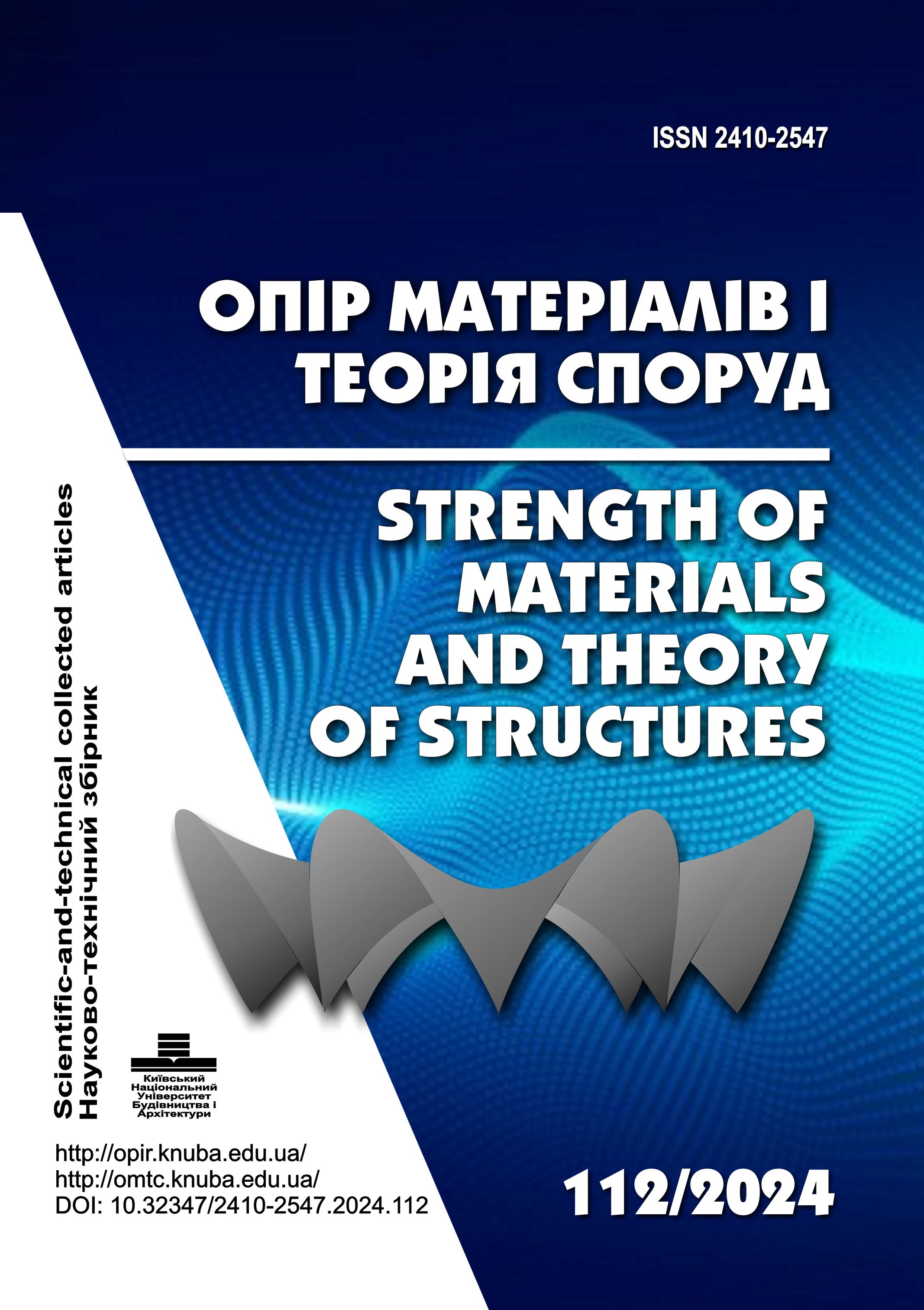Application graph theory to evaluate the stability of landslide slopes
DOI:
https://doi.org/10.32347/2410-2547.2024.112.19-27Keywords:
graph theory, landslides, slope stability factor, slope calculation methods, slope modelling, finite element method (FEM)Abstract
Evaluation of the stability of slopes is a complex and important engineering task, the solution of which requires the analysis of a significant number of factors. Many different methods of slope stability calculation have been developed to solve this type of problem. However, two groups of methods - limit equilibrium methods and the finite element method (FEM) - have become the most widely used. However, these methods have certain disadvantages. Limit equilibrium methods are limited by the assumptions used during the calculation, including the hypothesis of a solid compartment, which does not allow analyzing the stress-strain state. The FEM of the elements does not make it possible to unambiguously localize the sliding surface of the slope, and the determination of the stability coefficient using the method of reducing the strength of the soil requires a large number of complex iterative calculations. The methods and approaches of graph theory can be used precisely to combat the shortcomings of FEM.
The paper examines the basics of graph theory. The main methods of specifying graphs, as well as certain types of graphs with an indication of their key features, are presented. The concept of isomorphism of graphs and some features of their graphical representation are revealed.
The article presents the basic idea of using graph theory to calculate the stability of slopes. The main questions that must be solved when applying graph theory to the given type of problem are outlined. Two methods of converting a mesh of finite elements into a graph are considered in detail. The advantages and disadvantages of the proposed methods are analyzed. The transformation of the calculation scheme of an imaginary slope with a given geometry, which was simulated in the LIRA-SAPR software complex, into graphs using the above methods is demonstrated. An overview of the approaches that can be used to create a graph weight function is given.
References
Solodei I.I., Petrenko E.Yu., Pavlenko V.M. Klasyfikatsiia I prychyny vynyknennia zsuvnykh protsesiv ta metody rozrakhunku skhyliv (Classification and causes of landslide processes and slope calculation methods) // Opirmaterialiviteoriiasporud: nauk.-tekh. zbirnyk – K.: KNUBA, 2022. – Vyp. 109.– S. 184-202. https://doi.org/10.32347/2410-2547.2022.109.184-202
Solodei I.I., Petrenko E.Yu., Pavlenko V.M. Osoblyvosti metodiv otsinky stiikosti zsuvnykh ta zsuvonebezpechnykh skhyliv (Features of the methods of the slope stability evaluation.) // Opir materialiv I teoriia sporud: nauk.- tekh. zbirnyk – K.: KNUBA, 2023. – Vyp. 112.– S. 25-38. https://doi.org/10.32347/2410-2547.2023.111.25-38
Solodei I.I., Petrenko E.Yu., Pavlenko V.M. Postanovka zadachi modeliuvannia zsuvnykh protsesiv v plastychnykh gruntakh (Statement of the problem of simulation of shearprocesses in low-colusion plastics soils) // Opir materialiv I teoriia sporud: nauk.-tekh. zbirnyk – K.: KNUBA, 2023. – Vyp. 110.– S. 47-62. https://doi.org/10.32347/2410-2547.2023.110.47-62
Bondy J. A.,Murty U. S. R. Graph theory with applications.– New York: Elsevier Science Publishing Co., 1976. – 270p.
Diestel R. Graph Theory. – Berlin: Springer, 2017 – 429p.
Guan, Y., Liu, X., Wang, E., Wang, S. The stability analysis method of the cohesive granular slope on thebasis of graph theory// Materials 2017. – vol. 10(3), – 240.
Koiter W.T. General theorems for elastic plastic solids// Prog. Solid Mech. 1960. – pp. 165–221.
Wilson R. J. Introduction toGraph Theory. –Harlow:Longman, 1996 – 179p.
Zheng, W., Zhuang, X.,Tannant, D.D., Cai, Y, Nunoo, S. Unified continuum/discontinuum modeling framework for slope stability assessment// Eng. Geol. 2014, - 179. – pp. 90–101.
Downloads
Published
Issue
Section
License

This work is licensed under a Creative Commons Attribution 4.0 International License.
Authors retain copyright and grant the journal right of first publication with the work simultaneously licensed under a Creative Commons Attribution License that allows others to share the work with an acknowledgement of the work's authorship and initial publication in this journal.

